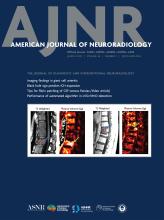This article requires a subscription to view the full text. If you have a subscription you may use the login form below to view the article. Access to this article can also be purchased.
Graphical Abstract
SUMMARY:
Conventional MRI is currently the preferred imaging technique for detection and evaluation of malignant spinal lesions. However, this technique is limited in its ability to assess tumor viability. Unlike conventional MRI, dynamic contrast-enhanced (DCE) MRI provides insight into the physiologic and hemodynamic characteristics of malignant spinal tumors and has been utilized in different types of spinal diseases. DCE has been shown to be especially useful in the cancer setting; specifically, DCE can discriminate between malignant and benign vertebral compression fractures as well as between atypical hemangiomas and metastases. DCE has also been shown to differentiate between different types of metastases. Furthermore, DCE can be useful in the assessment of radiation therapy for spinal metastases, including the prediction of tumor recurrence. This review considers data analysis methods utilized in prior studies of DCE-MRI data acquisition and clinical implications.
ABBREVIATIONS:
- AIF
- arterial input function
- AUC
- area under the curve
- DCE
- dynamic contrast-enhanced
- EES
- extravascular extracellular space
- HD-IGRT
- high-dose image-guided radiation therapy
- Kep
- exchange rate constant
- Ktrans
- permeability constant
- PD
- progressive disease
- SCI
- spinal cord injury
- SPGR
- spoiled gradient recalled
- TIC
- time intensity curve
- Ve
- extracellular volume fraction
- Vp
- plasma volume
- © 2025 by American Journal of Neuroradiology













